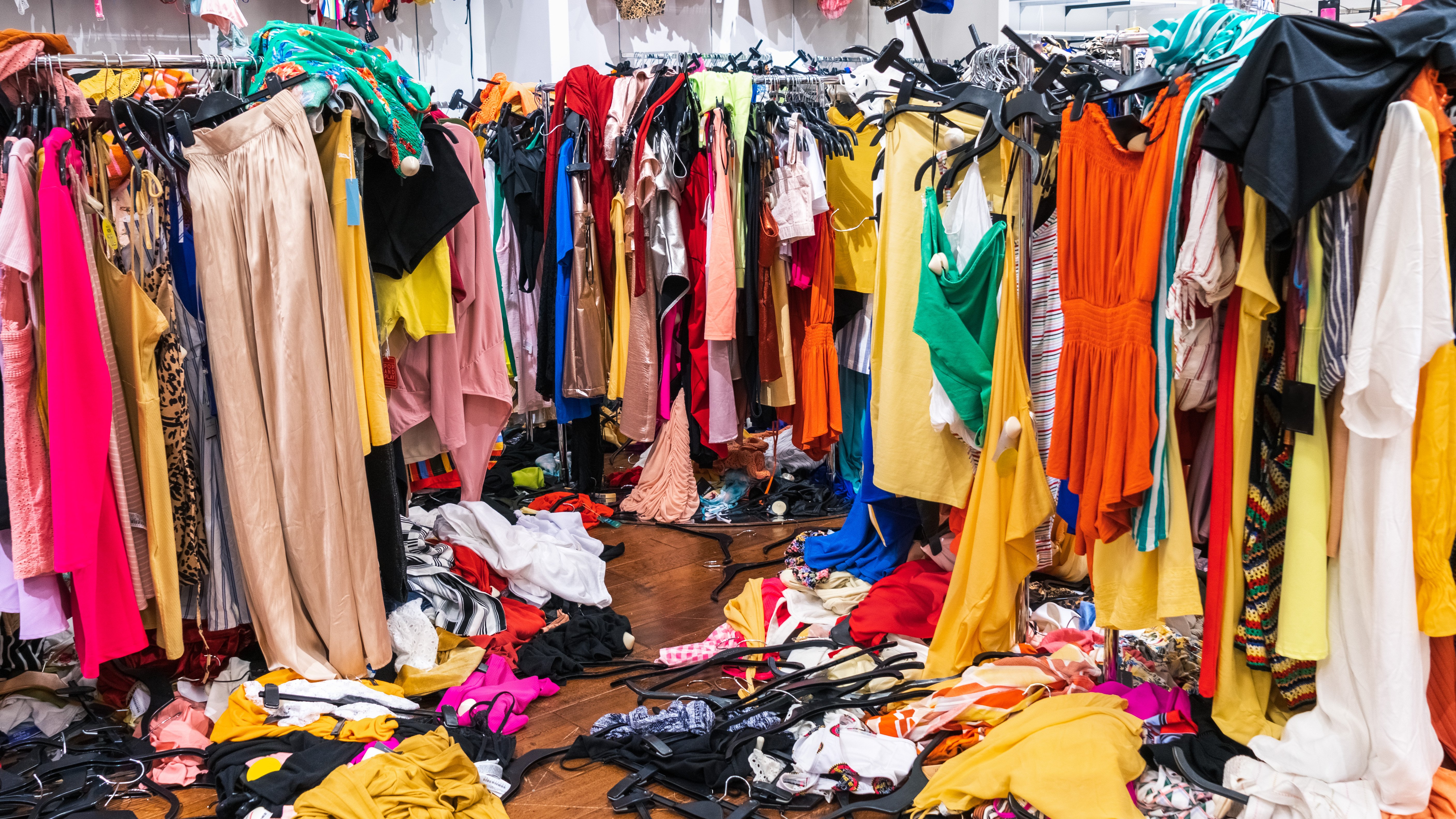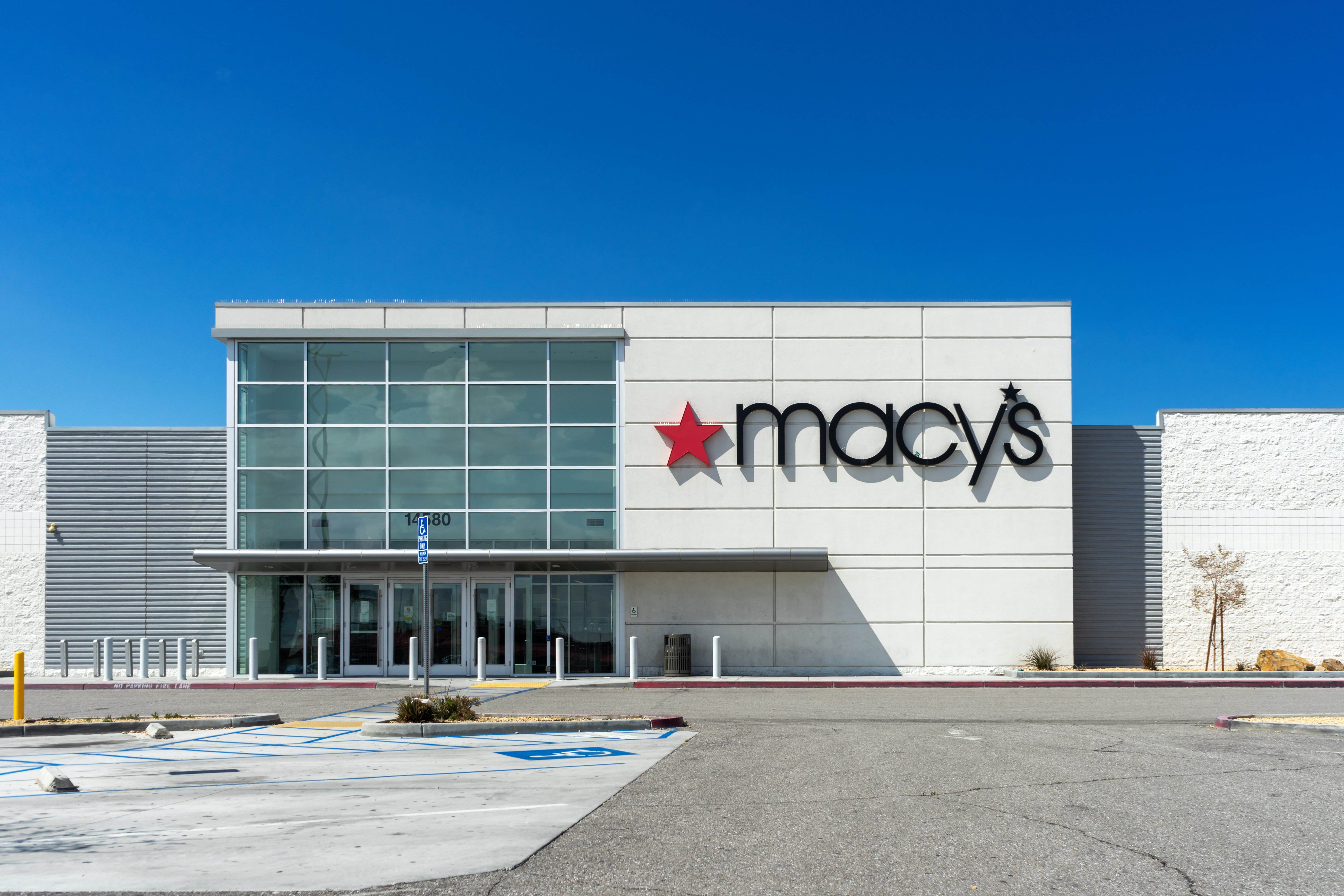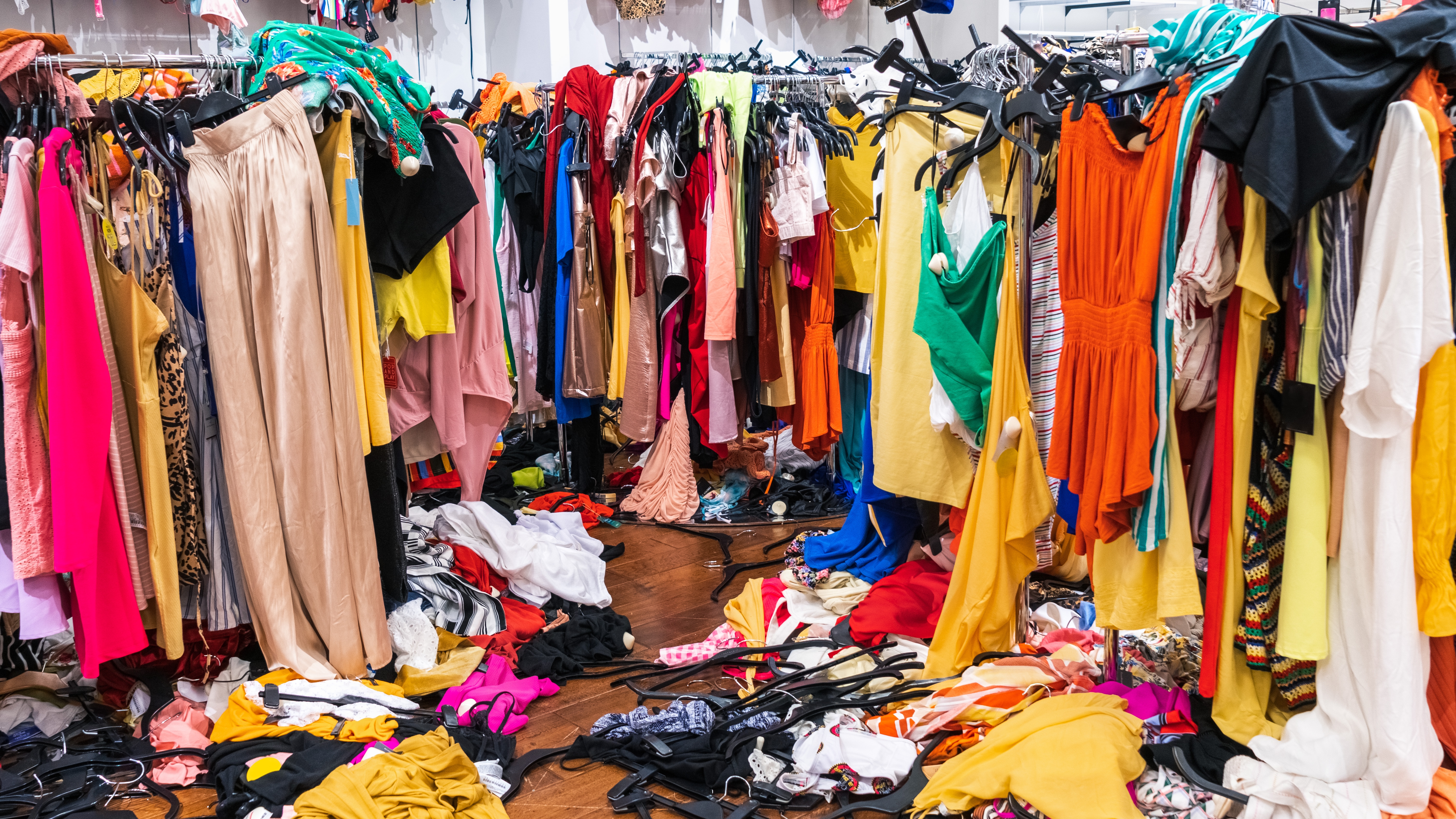As COVID (hopefully!) recedes, consumers have reentered brick & mortar retail locations only to find them in various states of chaos. Among the offenses, according to CNBC, sales floors converted into staging areas for online orders, half-empty shelves, unpacked inventory, piles of unsorted clothes and other goods, and employees darting around preparing orders for curbside pickup.
At Macy’s, things have gotten so bad that it has its own hashtag (#MessAtMacy’s). Photographs from recent in-store visits show naked mannequins, bare displays, and misplaced and forgotten merchandise.
As retail analyst Neil Saunders describes it, “This is pathetic retailing. Macy’s has no grip of the most basic elements of shopkeeping. Absolutely dire.”
Walmart hasn’t fared much better. Retail analyst Scott Muskin visited 60 Walmarts across the country and noted some common themes: abandoned carts of inventory, empty shelves, clearance racks blocking walkways, numerous out-of-stocks, and clothing in piles on the floor.
“You see a store that’s just completely tossed,” Mushkin said. “It’s like a tossed salad.”
There are several factors contributing to this general state of neglect, namely the pandemic-inspired rush to digital channels and the general trajectory of in-store retail over the last several years. But as consumers return to stores and can potentially be reminded of the joys of in-store shopping, retailers must find ways to clean up their act.
So, we’re putting in the retail market research to consider what has been going on in brick-and-mortar stores over the last year, what gaps must be closed, and how retailers can clean up their act.

The Pandemic, Supply Chains, and “Bolted on E-Commerce”
To be clear, we are not trying to pile on retailers here—the reasons for this mess are easily understood and, for the most part, obvious: the chaos in stores directly mirrors the chaos of 14 months under COVID-19.
As we recently outlined, the pandemic has broken the links in many supply chains, causing inventory headaches for retailers across the board. These supply shortages were exacerbated by peculiar consumer behavior during the pandemic, which accounts for out-of-stocks in categories like furniture and home improvement.
But more than that, the current state of retail mostly has to do with its recent trajectory, particularly the transition from brick & mortar to omnichannel and online. Macy’s was losing ground before lockdown; COVID merely made the decline steeper. As we wrote in the earliest days of the pandemic: “Whereas we were slowly walking towards the digital horizon, coronavirus now has us running to it.”
This means that retailers who had a digital transition in the works were forced to prioritize initiatives that were not necessarily ready for primetime. As in-store shopping, a pastime already in decline, gave way to e-commerce under lockdown, retailers like Walmart and Macy’s were forced to try and keep digital pace with Amazon. This meant devoting in-store employees and space to digital order fulfillment.

Retail analyst Steve Dennis refers to this as “Bolted on e-commerce,” an ad hoc solution to a problem that arose sooner than expected. This accounts for sales floors that have been converted into staging areas for online orders, and the general disarray of stores retail locations that became de facto fulfillment centers over the last year.
“There are lots of retailers that their stores were born for a different age,” said Dennis. “It was basically a place to go select what you want and now we are putting all these other demands on top of it.”
Store Presentation, Brand Perception, and Public Health
Up until recently, this bolted on e-commerce was working because online shoppers never saw the inside of stores. But retail visits across the country nearly doubled in the third week of March of this year after increasing 60% the week before. Customers—full of pent-up retail energy, armed with pandemic savings and stimulus checks, and ready to load up on forsaken categories like fashion—are coming back to retailers and finding a mess that does not match up with brand perceptions.
In the immortal words of Victor Gruen, the Australian architect most responsible for the design of US malls in the 1950s and 1960s: “A good storefront is one of your best salesmen. On its dignity and good taste people will base their opinions of your entire business.”
Said simply, the current condition of many retailers will not inspire good brand perceptions.
Sure, there are exceptions: Nobody really cares if deep discounters like TJ Maxx or Ross are perfectly organized because plowing throw piles of clothes is part of the treasure hunt consumers associate with these brands. Short of finding a turd in a shoe, consumers are not likely to notice or mind discounters’ disarray.

But for most retailers, chaos is not on brand. Gruen’s advice comes from a different era but, unfortunately for retailers, as we turn the page on a public health crisis, in-store cleanliness and organization is likely to be more important than ever.
This is simple psychology according to Kelly Haws, who studies consumer behavior.
“Being organized and clean is going to be more important than ever for people”, she said. “That’s going to give [consumers] signals of safety.”
As people cautiously reengage with the public world, they will be looking for signs that the environments they enter are safe. The trauma constantly fearing that the air we share with others may be infectious will not recede immediately and people, whether consciously or not, will be looking for signs that a store is prioritizing their safety. A disheveled environment does not connote the attention to detail and organization that such safety measures require.
Beyond questions of health and safety, disorganized stores, according to Neil Saunders of GlobalData Retail, also serve to remind customers of the relative ease of online shopping.
“Having a store that’s very messy and illogically laid out is quite very difficult for the consumer, because the consumer has to sift through a lot of things and they have to do a lot of searching to find the things that they want,” Saunders said. “And because people have gone online more during the pandemic, when they’re coming back to shopping, their tolerance for that will have reduced even further.”
This is especially problematic for stores directly competing with Amazon (isn’t everyone?), which has converted many a brick-and-mortar devotee into an online-first shopper during the pandemic.
A store that is organized, vibrant, and engaging will serve to remind customers of the social and practical pleasures of in-store shopping. One that is disorganized, stale, and messy will do just the opposite, reminding them of the comfort and ease of e-commerce. Such a reminder would likely drive them to Amazon or, at the very least, to the retailer’s digital channels, which are notoriously less profitable for companies than in-store sales.

Retail Market Research: Online and In-Store are Not Separate Initiatives
The biggest lesson market research can offer, then, is to not think of online and in-store as two entirely discrete channels that function independently of one another. It’s not a decision of investing in one or the other. Sure, the pandemic forced retailers to rapidly expand their digital investments on the fly as stores were closed, but as normalcy returns, retailers must find balance between the two.
Steve Sadove, former CEO of Saks, agrees.
'It’s not an either or - you have to make choices so that you can make the investments in both,” he said. “And you’re going to have to then make trade-offs because you don’t have unlimited resources.”
It should go without saying but is important to remember: Digital and in-store customers are not separate entities. There is not one bucket of online consumers and one of in-store consumers that brands must separately appeal to. They are, by and large, the same consumers. Their in-store visits inform their online purchases and visa-versa.
This is why, according to Macy’s CFO Adrian Mitchell, digital sales are two-to-three times better in regions with a Macy’s storefront. And when Macy’s abandons a particular market, that area’s online sales drop.

“Stores are providing the critical nodes to our digital customers,” Mitchell acknowledged.
Understanding that connection is crucial as retailers find solutions moving forward. Consider Walmart’s planned $14 billion investment this year, which will focus on creating automated fulfillment centers in many of their Superstores. While on the surface this may seem like a digital-only initiative, the investment will also free up in-store employees, who will no longer need to work on online order fulfillment but can instead focus on in-store service and care.
No, not everybody can just drop $14 billion like the Waltons but, even at a smaller scale, such mutually reinforcing initiatives must be retailers’ top priority.
More and more consumers are returning to in-store shopping every day. Retailers must do their best to avoid reminding them why they left in the first place.


